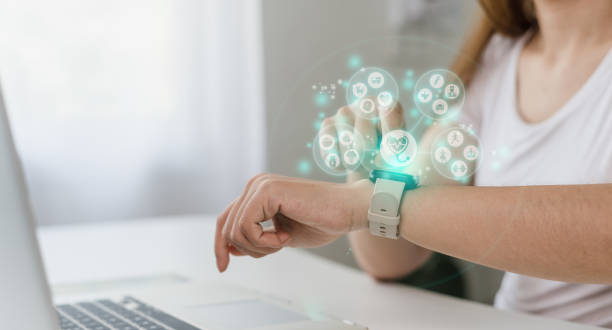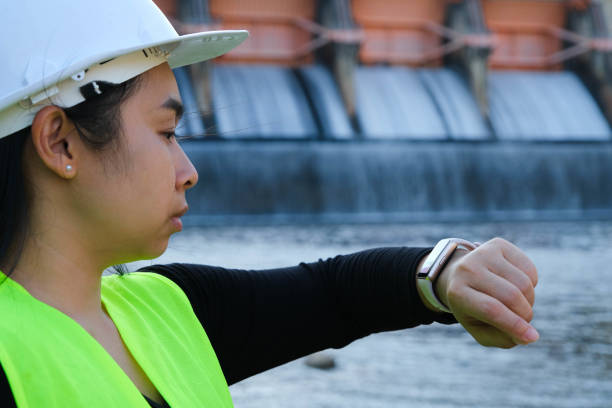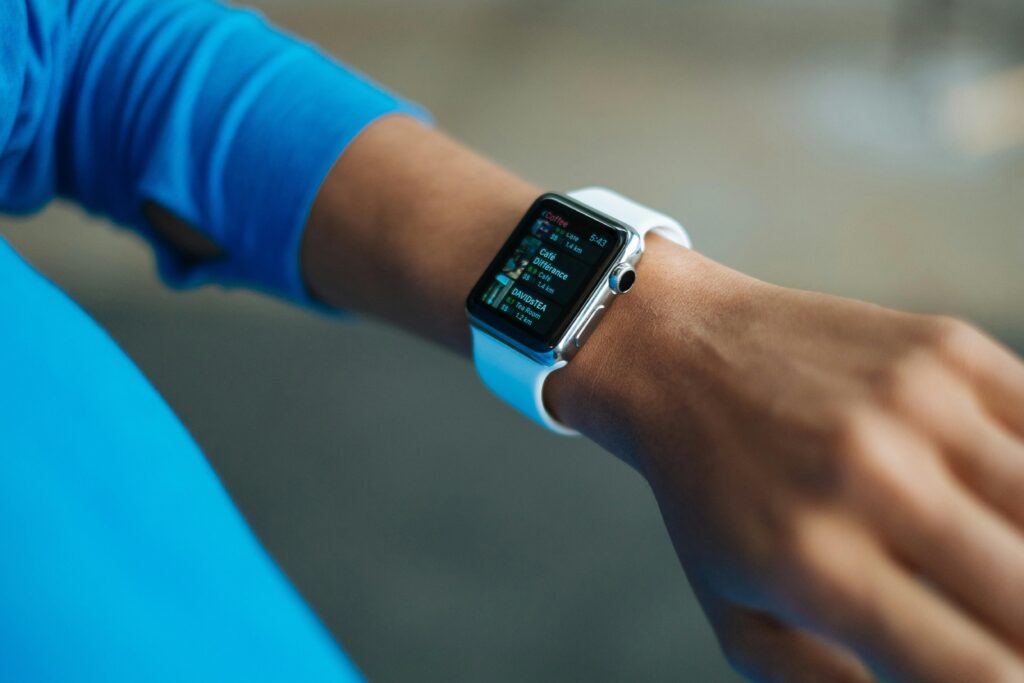Fitness Gadgets
What Are Bio Wearables
Bio wearables are a sort of technology that is rapidly gaining popularity in healthcare and personal wellness. These gadgets are intended to monitor numerous biomarkers in the body, such as glucose, ketones, and lactate, and offer users with information on their health and wellness. Bio wearables are made up of two main components: the biosensor, which measures data, and the software, which analyzes and displays the data in an understandable fashion.
Bio wearables offer a wide range of uses in healthcare, including monitoring chronic illnesses such as diabetes and tracking overall wellbeing and fitness. These devices are especially handy for those who want to be more proactive about their health and wellness. Bio wearables, which provide real-time data on key biomarkers, can assist users in making better informed nutrition, exercise, and lifestyle decisions. Furthermore, healthcare personnel can employ bio wearables to remotely monitor patients, enabling more personalized and efficient care.

Understanding Bio Wearables
Defining Bio Wearables
Bio wearables are a sort of wearable technology that collects and tracks biological information. These wearable devices may assess a variety of indicators such as heart rate, blood pressure, oxygen saturation, and glucose levels. Bio wearables can also monitor activity, sleep, and other health-related data.
Evolution of Wearable Tech
Wearable technology has advanced significantly since the first pedometer was invented in the 18th century. Today, bio wearables are among the most popular types of wearable technology, with millions of individuals wearing smartwatches and fitness trackers on a daily basis.
Wearable technology has evolved as a result of technological advancements such as microfluidic systems, biosensors, and nanotechnology. These technologies have enabled the creation of wearable gadgets that are smaller, more accurate, and powerful than ever before.
Components of Bio Wearables
Wearable sensors, biosensors, and other technologies are among the components that comprise biowearables. Wearable sensors track physical activity, whereas biosensors monitor biological data such as heart rate, blood pressure, and glucose levels.
Biosensors are often composed of a microfluidic device containing enzymes, antibodies, or DNA capable of detecting certain biomarkers. Some biosensors use nanotechnology, such as gold nanoparticles, to detect and analyze biomarkers more accurately.
Overall, bio wearables are a fascinating and quickly expanding topic with the potential to alter healthcare and deepen our understanding of the human body.

Applications in Health Monitoring
Bio wearables have transformed how we track our health. Wearable biosensors can now do more than just track steps and heart rate, thanks to advancements in sensor and operating system hardware. Here are some of the ways bio-wearables are utilized in health monitoring:
Continuous Glucose Monitoring
Continuous glucose monitoring (CGM) is a non-invasive method for measuring glucose levels in real time. CGM devices are worn on the body and employ a tiny sensor to monitor glucose levels in the interstitial fluid. This technology has changed the lives of diabetics by allowing them to better monitor their glucose levels and make informed decisions about insulin dosing and nutrition. Companies like Abbott, with their Freestyle Libre CGM system, have made this technology more affordable and usable.
Cardiovascular Health Tracking
Bio-wearables can potentially be used to monitor cardiovascular health. Smartwatches can monitor heart rate and track changes over time. This information can be used to identify abnormal cardiac rhythms and other cardiovascular problems. Lactate sensors can also be used to monitor the lactate threshold during exercise, which is a good predictor of cardiovascular fitness.
Fitness and Wellness Monitoring
Bio-wearables can also be used to track overall health and wellness. Sleep monitoring is a common function in many wearable devices, allowing users to monitor their sleep habits and make modifications to improve sleep quality. Wearables track steps, calories burned, and distance traveled. This information can be used to establish fitness objectives and monitor progress over time.

Disease Prevention and Management
Wearable biosensors have the potential to help prevent and treat chronic diseases. Wearables can notify consumers and healthcare providers to possible problems before they escalate. Furthermore, wearables can be used to track vital signs and monitor overall health, allowing for early detection of problems. This technology has the potential to significantly improve healthcare monitoring and illness management.
In conclusion, bio wearables have numerous uses in health monitoring. Wearable biosensors have the ability to deliver real-time health information and improve overall health and wellness by monitoring glucose levels continuously and preventing and managing diseases.
Technological Innovations and Challenges
Advancements in Sensor Technology
One of the most important technological advancements in bio wearables is the creation of sensors capable of measuring a wide range of biomarkers. Wearable gadgets, such as smartwatches and mobile apps, increasingly include glucose monitoring sensors. These sensors are non-invasive and offer continuous glucose monitoring, which is very beneficial for diabetics.
Sensor technology advancements have also resulted in the development of implantable biowearable devices. These sensors are implanted inside the body and can measure a variety of indicators, including heart rate, blood pressure, and oxygen levels. Implantable bio-wearables are especially beneficial for patients with chronic diseases that require constant monitoring.
Data Processing and Algorithm Development
Another significant difficulty in bio wearables is the development of algorithms capable of processing the massive volumes of data produced by these devices. This is especially essential in athletic performance monitoring, where bio wearables track variables like heart rate, respiration rate, and oxygen intake.
Advancements in algorithm development have also resulted in the creation of tattoo-based biowearables. These gadgets use ultrasonic or fluorescence technologies to detect biomarkers like glucose levels. Tattoo-based bio wearables are non-invasive and offer continuous monitoring, which is especially beneficial for diabetics.

Integration with Smart Devices
Bio-wearables are progressively being integrated into smart devices like smartphones and smartwatches. This integration enables users to monitor their health data in real time and receive warnings when specific biomarkers fall outside of typical ranges.
Advances in system integration have also resulted in the creation of wearable devices capable of monitoring COVID-19 symptoms. These gadgets employ physical sensors and electromagnetic fields to detect the presence of antibodies and enzymes in the body.
Safety and Regulatory Considerations
Ensuring the safety and regulatory compliance of bio wearables is a major challenge. This is especially critical for implantable bio wearables, which need surgery and carry the danger of infection.
Advances in safety and regulatory considerations have resulted in the creation of labeling and safety information for biowearables. This information is especially crucial for users who are unfamiliar with the technology and require instructions on how to use it securely.
Overall, technological advancements in bio wearables have resulted in the development of a diverse set of devices capable of monitoring a variety of biomarkers. These gadgets are increasingly connected with smart devices, allowing users to monitor their health data in real time. However, safety and regulatory considerations remain a fundamental challenge in the development and acceptance of bio wearables.
Future Directions and Potential
As biowearable technology continues to improve, we are observing growing market trends that imply a considerable need for these devices. The potential for personalized medicine is also becoming clear, since biowearables can continuously assess biomarkers inside the body in real time, allowing for precise diagnostics and therapies. However, ethical and privacy concerns must be taken into account.

Emerging Market Trends
The market for biowearables is predicted to increase dramatically in the future years, with an emphasis on implanted sensors, contact lenses, and wearable electrochemical devices. These devices can monitor a number of biomarkers, including interstitial fluid (ISF) glucose, ketones, and chemical markers, providing vital information for medical care and disease management.
Potential for Personalized Medicine
Biowearables have the potential to change healthcare, particularly in the realm of personalized medicine. Continuous glucose monitors, for example, can assist manage diabetes by detecting glucose levels in real-time, minimizing the danger of diabetic ketoacidosis. Wearable biosensors and DNA biosensors can also provide critical information for cancer diagnosis and treatment.
Ethical and Privacy Considerations
As with any new technology, ethical and privacy considerations must be taken into account when designing biowearable devices. Safety information must be carefully addressed, particularly for implantable sensors and devices that may quantify acceleration and weight loss. Furthermore, the use of biowearables raises concerns regarding data privacy and security, especially when these devices capture sensitive health information.
In conclusion, biowearables have the potential to transform healthcare by offering precise diagnosis and therapies for a wide range of medical disorders. However, as these devices evolve, ethical and privacy concerns must be addressed to ensure the protection of patients’ health information.
Conclusion
The essence of bio wearables lies in their ability to transcend the conventional metrics of mere physical activity tracking. They delve into the very core of our being, capturing the ebb and flow of our internal landscapes. From monitoring vital signs to deciphering stress levels and sleep quality, these wearables offer a panoramic view of our health, empowering us with insights that were once confined to the realm of medical diagnostics.
The convergence of technology and biology unfolds new chapters in preventive healthcare. Bio wearables emerge not merely as gadgets strapped to our wrists but as proactive companions on our wellness journey. The paradigm shifts from reactive healthcare to a realm where early detection, personalized insights, and preventive measures take center stage.
As I contemplate the array of bio wearables available—from smartwatches to biosensors woven into fabrics—I am struck by their potential to democratize healthcare. These devices, with their accessibility and user-friendly interfaces, place the reins of health management firmly in the hands of individuals. The era of active participation in one’s well-being dawns, ushered in by the unobtrusive yet powerful presence of bio wearables.


